Here we go again . . . You can read a general 40th Anniversary of Dalkey Archive Press post here, or click here for books from 1984–1993 and 1994–2003. Halfway to the goal of highlighting one book per year of Dalkey’s existence . . .
2004: Night by Vedrana Rudan, translated from the Croatian by Celia Hawkesworth
One of the most obscene Dalkey Archive covers ever, for one of its most blistering books . . .
Rudan’s Night is a one-woman monologue that takes place over a, as you probably guessed, single night during which Tonka, a Croatian woman about to leave her husband for a younger lover, watches TV and rails against all the awful things in life including, but not limited to: marriage, the Yugoslav war, America, corporations, men, men’s influence on societal structures, etc. It’s an intense, aggressive, spot-on, and quite funny rant, sort of like Louis-Ferdinand Céline mixed with Dubravka Ugresic.
This book—along with a handful of others from the year, including Chinese Letter by Svetislav Basara, Chopin’s Move by Jean Echenoz, and Television by Jean-Phillippe Toussaint—helps delineate a new phase in Dalkey Archive’s commitment to literature in translation.
It was a couple years prior to this that John starting thinking about reorienting the press more toward international writers. Theoretically, due to growing competition, it was becoming more difficult to do the best of the best English writers; and on the reprint front, New York Review Books was competing for many of the same reprints we were. But when it came to translations . . . Dalkey was one of the only games in town. Sure, New Directions had probably the richest back catalog of translated literature and had a number of contemporary superstars on the horizon (Javier Marías, Roberto Bolaño, Laszlo Krashnahorkai, Enrique Vila-Matas), but Archipelago and the “new wave” of translation-centric presses (such as Open Letter) weren’t fully established yet, so there was a definable space that Dalkey Archive could fill. Especially in terms of translations from Eastern Europe and other underrepresented countries—especially ones with funding for editorial trips and translators.
It was around this time (maybe 2002?) that John met Iris Schwanck of the Finnish Literature Exchange (FILI) at a London Book Fair reception and she told him that they had more or less “given up” on getting Finnish books published in America. Presses never responded, few to no books were being published in translation, and the cost of mailing things overseas was getting pretty expensive.
This led to John pursuing the strategy of creating “literature series,” which ideally came about in the following way: a European country’s literature center (such as FILI, NORLA, the Estonian Literature Center, Latvian Literature Center, the Dutch Foundation for Literature, Ramon Llull, Icelandic Book Office, etc.) would fully fund an exploratory editorial trip for John and another editor; while in the country, John would meet with editors, agents, critics, academics, authors, and translators, and identify 5-10 books contemporary and classic that would fit Dalkey’s list; then he would try and get the literature center to fund these series at the rate of $35,000/title. That figure never really came to be, but it was/is the total cost of publishing a book, and his belief was that if these countries wanted it bad enough, they would find the funds.
As you’ll see, the number of translations in the Dalkey list expands greatly after this point in time. There had always been translations (especially from the French), but before 2003, the highest number of translations published in a given year had been 10 (2000, 2003). That jumps to 13 this year—small in terms of absolute numbers, but significant as a percentage—and it’ll become an even more substantial part of the Dalkey Archive list as time goes on.
One final note: All funding issues aside, none of this would’ve come to fruition had it not been for Ana Lučić. An Illinois State University grad student from Serbia, Lučić could read and communicate in a number of Eastern European languages, was excellent at reaching out to various organizations and staying up on things, and getting samples of the sort of books that we all loved—darkly absurd, at times grim, less focused on plot and more on character, style, and structure. Her impact on the Dalkey Archive catalog at this time can not be overstated.
Total Titles Published in 2004: 25
Countries Represented: 12
Translations Published: 13
Other Notable Titles from 2004: Three Trapped Tigers by Guillermo Cabrera Infante, Mountain R by Jacques Jouet, Tom Harris by Stefan Themerson
2005: Natural Novel by Georgi Gospodinov, translated from the Bulgarian by Zornitsa Hristova
Two stories immediately come to mind about this book . . .
The first is that, to this day, whenever I see Georgi, he brings up the substantial edit I made to Natural Novel. Before explaining what that it was, it’s worth mentioning that the editorial culture present in American publishing is pretty extreme compared to the rest of the world. So many European authors have told me that their books are pretty much printed as written with the editor generally proofing the book, but little else. Substantive editing is a rarity, which is why some authors view having their book translated into English as a great opportunity to get feedback and to tweak and improve their work. (Dubravka Ugresic was a huge proponent of this idea, seeing her works as constantly being in flux, added to and improved each time they passed into a new language.) Usually the edits I make to books in translation are relatively minor, more on a line level than one of structure or form, but not always . . .
In Natural Novel—which is written with a mosaic-like structure, representing the fragmentary way that flies see the world—there are three sections in which the narrator recounts “pleasures from the 60s/70s/80s.” The first is when he’s a baby, so it’s an impressionistic paragraph. (“. . . The pleasure of floating in the womb, your first and only nursery . . . of peeing in your own diapers . . . the pleasure of what’s warm and damp . . . then clean and dry . . .”) The second takes place between the ages of 3 and 12 and is one page. (“. . . the first squiggly letters (my handwriting has hardly evolved since) in the margins of childrens’ poetry books . . . the pleasure of writing my own name . . . the first infatuation with one of my cousins . . .”) And the third . . . Well, in the initial manuscript, the “List of Pleasures in the 1980s” went on for several pages (in my mind it was 8-10, but that might be exaggerated) and was much more narrative driven about a high school teacher (again, my memory may be faulty), and overall, it lacked the impressionistic punch of the other sections. Instead, it felt as if it existed mostly to finish off the conceit of these three sections. It was my least favorite part of this sharp, witty, amazing, book, but it opened with an incredible first line, which, in my edit, became the only line of this section: “. . . I can’t remember any pleasures.”
The other thing I remember is claiming (after a good deal of research, but still), that this was the first Bulgarian novel to ever be published in English. Even put that right into the press release for the novel. A year or so later, someone told me about a classic Bulgarian novel that had been published sometime in the 1920s, but by then, our little marketing gambit had already paid off, and Gospodinov was on his way to becoming the international literary superstar he is today.
Total Titles Published in 2005: 26
Countries Represented: 14
Translations Published: 15
Other Notable Titles from 2005: Voices from Chernobyl by Svetlana Alexievich, Paradise by Donald Barthelme, Bouvard and Pecuchet by Gustave Flaubert
2006: Sacco and Vanzetti Must Die! by Mark Binelli
Because who doesn’t love Italian assassins these days?
Binelli’s book was such a find. I want to say that it was Jeremy Davies who found this in the “slush pile,” although it’s possible that it was someone else. Regardless, in addition to the book itself—which weds anarchism and slapstick comedy, especially of the commedia dell'arte variety, together in a way that’s hilarious, fast-paced, sand teeming with ideas—there was an amazing cover letter in which Binelli explained that he was a contributing editor for Rolling Stone (his journalistic impulses are more evident in Detroit City Is the Place to Be and Screamin' Jay Hawkins' All-Time Greatest Hits: A Novel, but are in this novel as well) and had pissed off Britney Spears.
From an interview with Mark by Ted McDermott that appeared in Context:
TM: Do you still write a lot of reviews for Rolling Stone?
MB: Not reviews, but features and profiles, yes. Most recently, I did a cover story on Paul McCartney and a long feature on this group of teenagers who were smuggling millions of dollars worth of pot from British Columbia into Idaho. It’s a nice range. I’m generally writing about people I’m a fan of, or at least curious to meet: Bruce Springsteen, Michael Moore, Bright Eyes, 50 Cent, the graphic novelist Joe Sacco, the surviving members of the Clash. And I’ve had lots of memorable experiences. My profile of Hank Williams III prompted his family to stage an intervention and put him in rehab. I went bowling with Outkast. Britney Spears hates me. There are few better day jobs.
TM: Why does Britney hate you?
MB: Unflattering interview. In my defense, I simply quoted her at length. But she didn’t come off well, and subsequently told MTV I sucked, and was rude, and ended by saying she was giving me too much energy. A friend pointed out my good fortune, noting that celebrity energy is probably much higher wattage than regular-people energy.
Is this the most lowbrow turn a Center for Book Culture/Dalkey Archive interview has ever taken? I’m imagining the Britney questions accidentally being sent to Nicholas Mosley.
TM: Mosley and Britney go way back.
This was a book that I had such a great time helping to market. Binelli—who became and is a good friend—is absolutely charming and brilliant, and our strategy of going to BookExpo America and crashing every party possible to get him in front of all the reviewers and tastemakers totally panned out. (Pretty sure this was the BEA in Washington D.C. in which I talked my way into an NYRB party at The Phillips Collection (?) with at least ten other party crashers in tow. Those were the days . . .)
It was also during an interview with Publishers Weekly for a feature on Mark’s book that I learned that it was standard operating procedure for publishers to lie—by a multiple of three or more—about their initial print runs. Since that moment, I’ve never published a first print run of fewer than 10,000 copies. (Publishing is an aspirational industry in which one frequently states what one wants to make true. So why not 10,000?)
[Note: In Context 19, there’s a piece by Viktor Shklovsky imagining a filmscript about Sacco & Vanzetti. This isn’t currently accessible online, but stay tuned and I’ll run it here in the next couple weeks.]
Total Titles Published in 2006: 28
Countries Represented: 12
Translations Published: 13
Other Notable Titles from 2006: Melancholy by Jon Fosse, A Fool’s Paradise by Anita Konkka, Things in the Night by Mati Unt
2007: Omega Minor by Paul Verhaeghen, translated from the Flemish by the author
I’ve been wanting to reread this book for a while now, so expect a season of the Two Month Review on it at some point in 2025.
This book is a perfect example of how an editorial trip can lead to serendipitous discoveries. Since we were in Amsterdam already, John and I popped down to Antwerp (no offense, but this was one of the bleakest, most depressing cities I’ve been to—dark, cold, rainy, reserved) to meet with the Flemish Literary Fund and visit the Louis Paul Boon Centrum. We only had a day there, so there weren’t a ton of meetings, and, as is usually the case, everyone tended to focus on the most popular, best-selling, recent books. (It usually takes a couple face-to-face meetings to get someone aligned with the Dalkey Archive/Open Letter aesthetic and our desire for the most interesting books, not necessarily the ones agents think are most likely to sell abroad.) It was while trying to press one editor to name stranger, more ambitious books from authors influenced by Louis Paul Boon that Omega Minor was referenced—and referred to as being “Pynchonesque.”
And it is! It’s ambitious, involves Nazis and World War II, and science, is funny and outrageous at times while interrogating the power structures of society, and has dozens of characters. I suspect a lot of Gravity’s Rainbow fans—and general Dalkey Archive fans—would really enjoy this book . . . if they haven’t already. (Fifty-four copies still in stock, so if you haven’t read it, I’d recommend ordering one soon.) It won the Independent Foreign Fiction Prize in 2008 and was longlisted for the Best Translated Book Award the same year. It sold more than 5,000 copies to date (legit number, no exaggeration), which is impressive for a book of this size and heft.
My Pynchon obsession and desire to do big swings like this, along with Richard Powers’s support of this book led us to sign it on after reading a short sample. And didn’t hurt that the Flemish Literary Fund was going to support the translation . . .
Until suddenly they weren’t.
The FLF has a system by which you submit a sample translation of a book you want to publish, and then a panel of experts determine whether or not the translation is up to snuff. Which we did, and were quickly rejected on the basis that the translator “wasn’t familiar enough with Flemish” to receive financial support.
Which was weird, since the translator was Paul Verhaeghen himself!
The problem the committee had was with a slight tweak Verhaeghen had made to the text while translating—an edit, if you will—in which he used American football slang (“touchdown,” I believe) that wasn’t in the original, but made more sense for the American market.
Once we explained the game to the FLF and that, well, the translator is not just familiar with Flemish, but intimately familiar with the Flemish used in the book itself, the problem dissipated. And as a result, we brought out the most expansive work of Flemish literature in English since Boon’s Chapel Road. If only Verhaeghen would write more novels . . .
Total Titles Published in 2007: 27
Countries Represented: 11
Translations Published: 14
Other Notable Titles from 2007: The Confidence-Man by Herman Melville, Vain Art of the Fugue by Dumitru Tsepeneag, Christ Versus Arizona by Camilo José Cela
2008: Hotel Crystal by Olivier Rolin, translated from the French by Jane Kuntz
Here we go with the “hotel” books!
At some point next year, I’m going to write short pieces about every single “hotel book” I can find in the Dalkey catalog. John was always attracted to these—and “travel novels” more broadly, as can be seen in his own novel, which centers around a man returning from a trip abroad to O’Hare Airport.
This one is particularly fun in that it’s supposedly a “found manuscript” of notes written by “Olivier Rolin” from hotel rooms around the world. There’s a bit of Perec to it in the way it depicts these rooms and spaces, and a bit of Svetislav Basara in the implications of a worldwide series of secret societies at play. Fits right in with the subset of Dalkey titles in which structure trumps everything.
Although this is the only book by Olivier Rolin available in English, Dalkey Archive has done two books by his brother Jean: The Explosion of the Radiator Hose and Savannah.
Total Titles Published in 2008: 28
Countries Represented: 13
Translations Published: 16
Other Notable Titles from 2008: Knowledge of Hell by António Lobo Antunes, I’d Like by Amanda Michalopoulou, Mirror in the Well by Micheline Aharonian Marcom
2009: Best European Fiction 2010, edited by Alexander Hemon, preface by Zadie Smith
First off, yes, despite its title, this was actually published in 2009. Which was the case for all the other volumes as well. I mean, it’s not as if these volumes collected the “best fiction” from the year in question anyway. This one was relatively close—most of the stories were published in their original language in 2009, although some are from as far back as 2004. Later on, the scope broadens, but by that point, the whole project was operating under a dark cloud, both for lack of payment to translators and becoming a transparent “pay to play” scheme. Much like “fun facts” in sports, every “Best X” hides a lie . . .
But for this celebratory post, we’re not going to focus on the negative . . . Instead, I just want to point out that from both a sales perspective (it’s the 12th best-selling Dalkey Archive book ever) and in terms of boosting the careers of the authors included in its pages.
Just looking at the 2010 edition, there are 35 featured authors, including several that had already reached a level of success in English—Jean-Phillipe Toussaint, Georgi Gospodinov, George Konrád, Vladimir Pelevin, David Albahari, Jon Fosse, Julián Ríos, Peter Stamm, Deborah Levy, Julian Gough, and Alasdair Gray, at least—and of the remaining, several more ended up having full works published by over the next handful of years, including: Ornela Vorpsi, Peter Terrin, Igor Štiks, Naja Marie Aidt, Christine Montalbetti, Steinar Bragi, Giulio Mozzi, Inga Ābele, Giedra Radvilaviciute, Goce Smilevski, Michał Witkowski, Peter Krištúfek, Andrej Blatnik, and Penny Simpson.
That’s a hell of a hit-rate . . . At some point, after I get my hands on all ten volumes, I’ll write something about the overall success rate of authors featured in BEF, along with a list of names worth checking out and, because it’s definitely part of the story, some of the controversies surrounding this series.
Overall though, this seems to have accomplished the three goals John would’ve had in mind: 1) attention for the press as the biggest player in the world of literature in translation, 2) receive international funding to offset most/all costs associated with producing this, and 3) use it as a sort of “testing ground” to identify new authors worthy of being published.
Total Titles Published in 2009: 42
Countries Represented: 19
Translations Published: 23
Other Notable Titles from 2009: Book of Jokes by Momus, Other City by Michal Ajvaz, News of the Empire by Fernando del Paso
2010: Hotel Europa by Dumitru Tsepeneag, translated from the Romanian by Patrick Camiller
Back with another “hotel” book!!
John and I were both totally bonkers over the first Tsepeneag book we did, Vain Art of the Fugue. (Calling back to an earlier entry, Ana Lučić brought this to our attention as well.) In fact, the novel that John wrote—and to which I keep alluding—seems to be heavily influenced by Tsepeneag, whose aesthetic falls into the “repetition with variation,” Nouveau Roman, strand of Dalkey Archive titles.
Dalkey Archive did a total of nine of Tsepeneag’s books before John’s passing, and had at least at least two more in the works, which have, sadly, been temporarily abandoned.
Since I know that at least Vain Art of the Fugue is Dalkey Essential-worthy, I’m going to spend part of this year (re)reading all of his books to make sure that the one or two best make it into this series—and as as part of something I’ll be launching here in January, I’ll post short write ups on all of them.
Outside of his work Tsepeneag’s life is incredibly interesting. He was part of the “Oniric” movement of writers in Romania, a group influenced by avant-garde and experimental writers, and rejected the Socialist Realism prevalent in the area. This was fine for a while, but with the rise of Ceaușescu and his totalitarian regime, Romanian literature was curtailed, Tsepeneag became more political as a writer, and, while in France, had his Romanian citizenship revoked as a result. So he stayed in France, where many of his works were first published. (Initially he still wrote in Romanian and was translated into French, but eventually he began writing directly in French.) His exile lasted until 1989, after which he was able to return to Romania and continue advocating for Romanian literature both there and abroad.
Total Titles Published in 2010: 37
Countries Represented: 15
Translations Published: 29
Other Notable Titles from 2010: Arriving in Avignon by Daniel Robberechts, Dolly City by Orly Castel-Bloom, Necropolis by Boris Pahor
2011: The Faster I Walk, the Smaller I Am by Kjersti Skomsvold, translated from the Norwegian by Kerri A. Pierce
I’m including this here not only because Skomsvold is a fascinating writer—we did a season of the Two Month Review on Monsterhuman, and published The Child at Open Letter—or because this book was a finalist for the IMPAC/Dublin Literary Award, or because Kerri A. Pierce lives in Rochester and is a good friend who has translated a bunch of books for us, but because this is part of John’s increased interest in Norwegian literature.
I’ve already mentioned Jon Fosse and how they became friends, but he also became quiet close to Skomsvold and fellow Norwegian writer Stig Sæterbakken, whose suicide seemed to have hit John pretty hard. Since it’s the season, it’s also worth mentioning that for several years, John would spend Christmas in Norway—which truly sounds delightful—especially if you like the dark. (I’m writing from Latvia, where, just yesterday, I said the most “dad” thing ever and told everyone we needed to get a move on because we were “wasting the 6-1/2 hours of sun!!” Anyway.)
Although the actual number of titles is pretty modest—prior to John’s passing, Dalkey did 19 distinct Norwegian titles, 18 of which came out between 2010–2018—this is one of the more well-developed Dalkey Archive series outside of America, Britain, France, and Ireland. And given that none of the books he published fall into the category of “Scandi Noir,” that’s fairly impressive.
Total Titles Published in 2011: 42
Countries Represented: 20
Translations Published: 33
Other Notable Titles from 2011: Barley Patch by Gerald Murnane, Impressions of Africa by Raymond Roussel, Galley Slave by Drago Jancar
2012: With the Animals by Noëlle Revaz, translated from the French by W. Donald Wilson
Back in 2013, when this book was longlisted for the Best Translated Book Award, I wrote the “Why This Book Should Win” entry for it, because, according to the jacket copy, “With the Animals, Revaz's shocking debut, is a novel of mud and blood whose linguistic audaciousness is matched only by its brutality, misanthropy, and gallows humor,” and according to my post at the time, “I need a little more mud and anger in my life.” And oh boy is this book aggressively offensive, loaded with hate and disgust, diatribes and many examples of “masculinity gone mad.”
Which describes another subset of Dalkey Archive books, although I think what most makes this a Dalkey title is the innovation in terms of language and voice. From W. Donald Wilson’s introduction:
In the original French, Paul [the narrator and protagonist of the novel, an uneducated farmer who smacks his wife around and can’t remember the names of his kids] lives in no specific place, nor does he use any particular form of speech or dialect: his idiom is an invented one. Of course many of the idiosyncrasies of his French are unavailable in English, such as his mangling of the more complex French negatives, his ease in inventing reflexive forms of verbs and his placement of adjectives before rather than after nouns (and vice versa). Also unavailable was his constant use of the impersonal pronoun “on,” used to create a greater impression of detachment and depersonalization than is allowed by its closes available English equivalent, “you.” I was therefore concerned to develop a voice that, while delivering that “slap in the face,” would not show any strained attempt to write incorrectly or distort the English language unnaturally, but would flow instead from Paul’s character and situation. Lacking any example or conventional usage to follow, Paul would have to improvise his language, resulting in a certain stylistic awkwardness. His word-order would be unconventional, reflecting the spontaneous order of his thoughts (for instance in the placement of adverbs or in stating the topic or subject of sentences first, as in Georges, he said). His use of conjunctions would be weak. Object pronouns would sometimes be omitted, and the definite article would sometimes occur where no article is normal in English. He would be uncertain of grammatical categories, confusing nouns, adjectives, and verbs. His grasp of verb forms, especially the verb ‘to be’ (as in there is + plural, or you/we/they was), and of pronouns would be unsure (as in me for I and them for those). Yet he would not use common dialect forms such as ain’t, and only occasionally employ double negatives.
And as an example, here’s the first paragraph:
Before when I go out in the morning I’ve knocked back a good brimmer already and things fall together like straw. Till then I’ve a face like night on me and a garlic mouth and I can’t stand anyone wants to be coddled like a snot-nosed pup. Head under the tap and already I’m getting the machines out. Vulva, she’s still dragging round, she scrubs down in a corner and dries off in the kitchen.
With the Animals isn’t the first or only book to write weird, but it is distinctive, challenging to translate, and a book that demands the attention and imagination of its reader.
One other note about this: Similar to the Norwegian Literature Series referenced above, John published 18 Swiss works before his death, 5 of which came out in 2012, and 4 more in 2013. I suspect this burst of interest in Swiss writing can be largely attributed to Pro Helvetia funding, but at the same time, every one of these books I’ve read is a gem. It’s just unfortunate that doing so many books in one year—not just of Swiss titles, but overall—prevented all the books from getting the necessary space to breathe and find their audience. (Another long-term “Mining the Dalkey Archive” project perhaps?)
Total Titles Published in 2012: 49
Countries Represented: 21
Translations Published: 39
Other Notable Titles from 2012: J R by William Gaddis, Siege in the Room by Miquel Bauçà, Project for a Revolution in New York by Alain Robbe-Grillet
2013: George Anderson: Notes for a Love Song in Imperial Time by Peter Dimock
Speaking of doing “too many books” in a given year, 65 titles is bonkers for an independent press of any size, much less one that has historically struggled with retaining good employees. But they managed to get the books printed, and sales seemed to be quite healthy . . . at least on the whole. Total net units sold in fiscal years 2012 and 2013 were two of the best ever, however, if you break these down into a per book basis . . . the picture isn’t as rosy.
I’m still a bit baffled by why John did this. He spent hours and hours—with a litany of examples—explaining how flooding the zone with product never worked out long term. Since the returns on gross sales for this onslaught of titles would trickle in over the ensuing few years, you more or less had to outrun your pace of production, and trying to up the number of books published every year is not sustainable.
Furthermore, John was obsessed with creating a “working endowment” out of the backlist. I’ve written about this before, but in short, if you have 500-700 backlist titles selling at an average of 100-150 copies a year with next to no effort on the part of employees, you will generate enough net income to underwrite most, if not all, of your annual expenses. However, if a book doesn’t perform well in Year One, it’s highly unlikely to do so in Year Ten, when you need those backlists sales to support your new ventures.
I haven’t done the math, but I do have the data to analyze this hypothesis and check its veracity. But simply by looking through this list of titles, I’m willing to bet that very few of these performed as well as backlist books as ones from say, 1998, when there was a more appropriate amount of man hours available to spend on each individual title.
Which, in a roundabout way, brings me to Peter Dimock, one of the smartest publishing people I have ever met. In addition to writing incredibly cerebral, linguistically and structurally complicated—yet very moving—novels that tend to revolve around the interplay of political power and how evil acts are justified through writing and rhetoric (in addition to George Anderson, see A Short Rhetoric for Leaving the Family and the book he did with Deep Vellum, Daybook from Sheep Meadow: The Notebooks of Tallis Martinson), Dimock edited Toni Morrison (among many others) while at Random House, and wrote a few incredibly brilliant pieces for Context.
I’ll rerun at least one of these in the near future—just have to type it all out—but one of the things I remember him writing (or talking?) about that’s stuck with me for decades is how, especially with “classic” books, the best sort of book cover design is one that makes you feel more intelligent and learned simply for having purchased the book. It doesn’t matter if you actually read it, but you feel smarter for having something on your shelf that conveys a sheen of intellectual heft. It’s pretty bleak to think of works by say, Faulkner, as symbolic objects propping up one’s sense of self and intellect, and yet . . . most everything feels like a prop of one sort or another these days.
I really need to go back and read all three of Peter’s books now that I’m a more sophisticated reader. His work is incredibly rewarding—even more so on a second read.
Total Titles Published in 2013: 65
Countries Represented: 22
Translations Published: 45
Other Notable Titles from 2013: No Variations by Luis Chitarroni, Soil by Yi Kwang-su, Through the Night by Stig Sæterbakken
One entry to go! And then on to a series of other posts that I have plotted out. The year 2025 promises to be an exciting and expansive one for this Substack and my attempts to restore the heart of Dalkey Archive and explore as many corners as possible of its literary universe in ways that I hope are entertaining and sometimes illuminating.

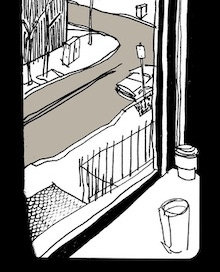



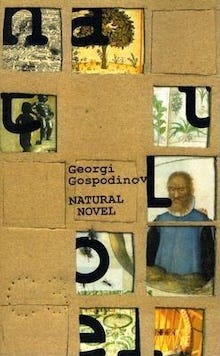
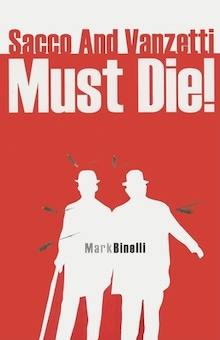
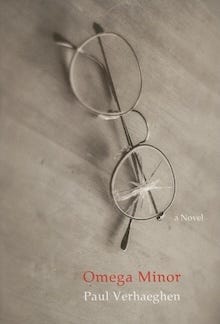
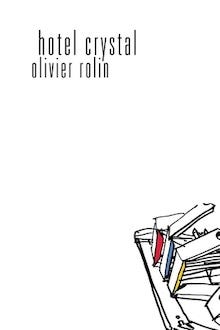
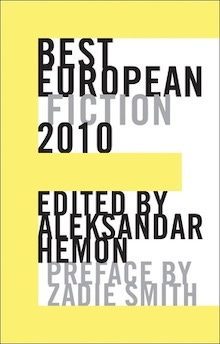
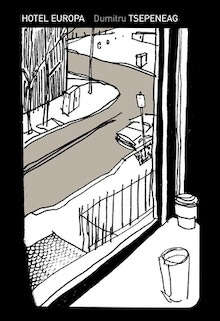



Substack is worth existing just for this series.
Very interesting, the bit about the Gospodinov novel.